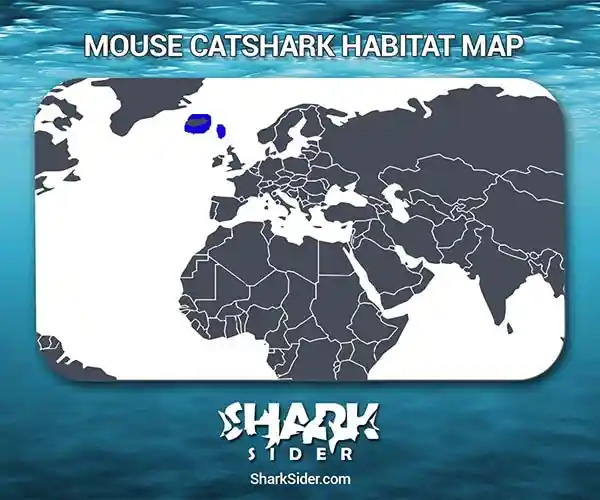The mouse catshark is a species living in the Atlantic Ocean.
Mouse Catshark Scientific Classification |
|
| Kingdom | Animalia |
| Phylum | Chordata |
| Class | Chondrichthyes |
| Order | Carcharhiniformes |
| Family | Scyliorhinidae |
| Genus | Galeus |
| Scientific Name | G. murinus |
Description
There needs to be more clarity over the maximum length of the mouse catshark, with total body lengths ranging from 19 inches to 33 inches. The longer specimens have been observed in Iceland, which may be another catshark of the same genus.
Mouse catsharks have a firm body with a blunt snout, oval eyes protected by third eyelids, and nostrils covered with skin flaps. Their large mouths forms a wide arch and has well-developed furrows at the corners.
It has two dorsal fins of similar shape, two broad pectoral fins, and two wide pelvic fins with rounded margins. Dorsally these sharks are plain brown but are a bit lighter on the underside.
Where do they live
Map Of The Mouse Catshark’s Habitat

Mouse catsharks live in the northeastern Atlantic, with sightings in France, Ireland, Scotland, the Faroe Islands, the Hebrides, western Iceland, and Western Sahara. Its depth range is 1,250–4,270 ft, on or close to the bottom over the continental slope.
Behavior
Feeding
They mainly feed on shrimp but will also feed on bony fish, cephalopods, and crustaceans. Mouse catsharks hunt on or close to the ocean floor.
Reproductive
Mouse catsharks are oviparous, laying eggs inside golden yellow, vase-shaped capsules. Each of these capsules are 2.1–2.2 inches long and 0.55–0.67 inches across and covered with fibers, giving it a hairy appearance.
The baby sharks are 3.1–3.5 inches long when they hatch.
Interactions with humans
The IUCN classifies the mouse catshark as “Least Concern” or “LC”.
